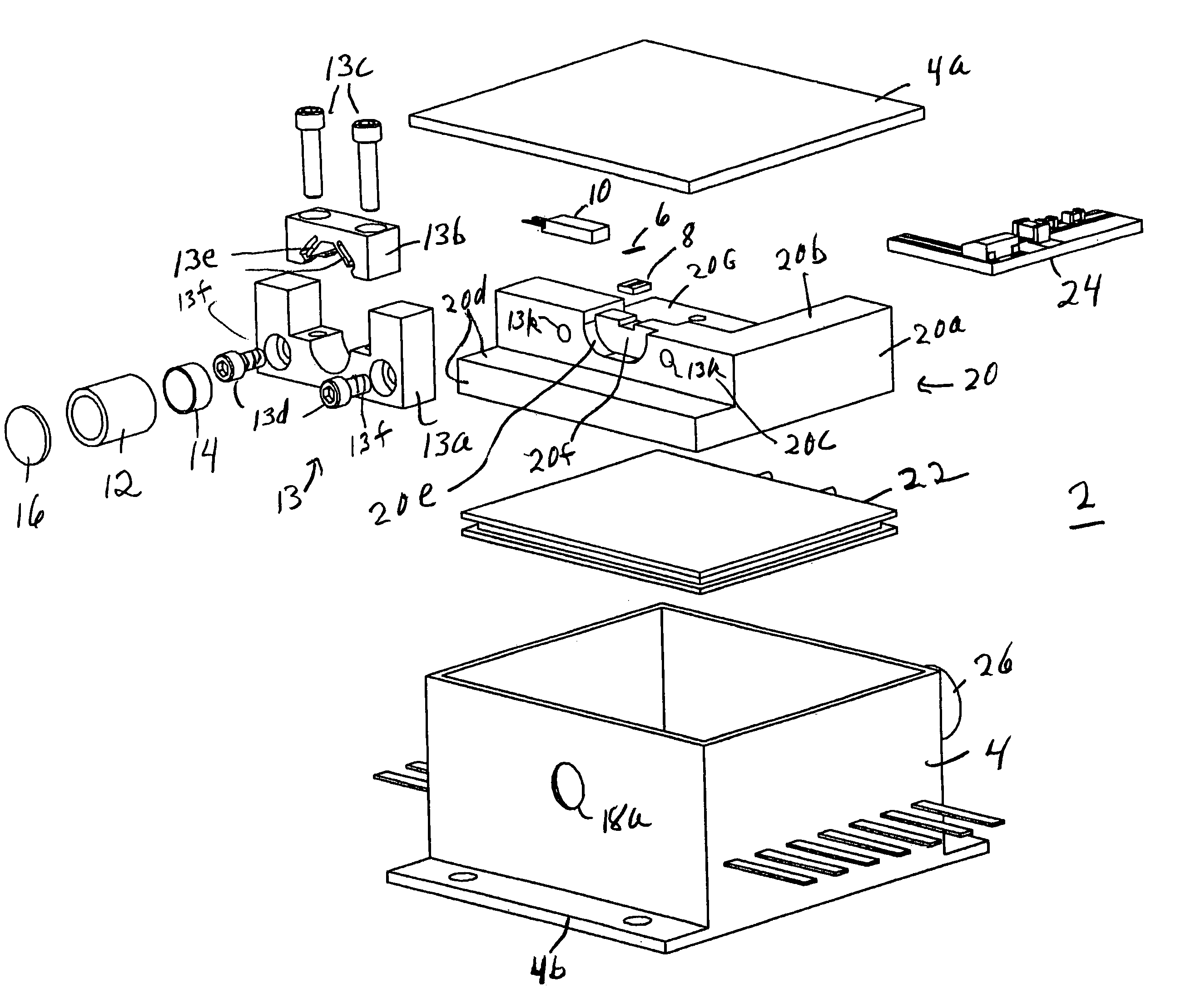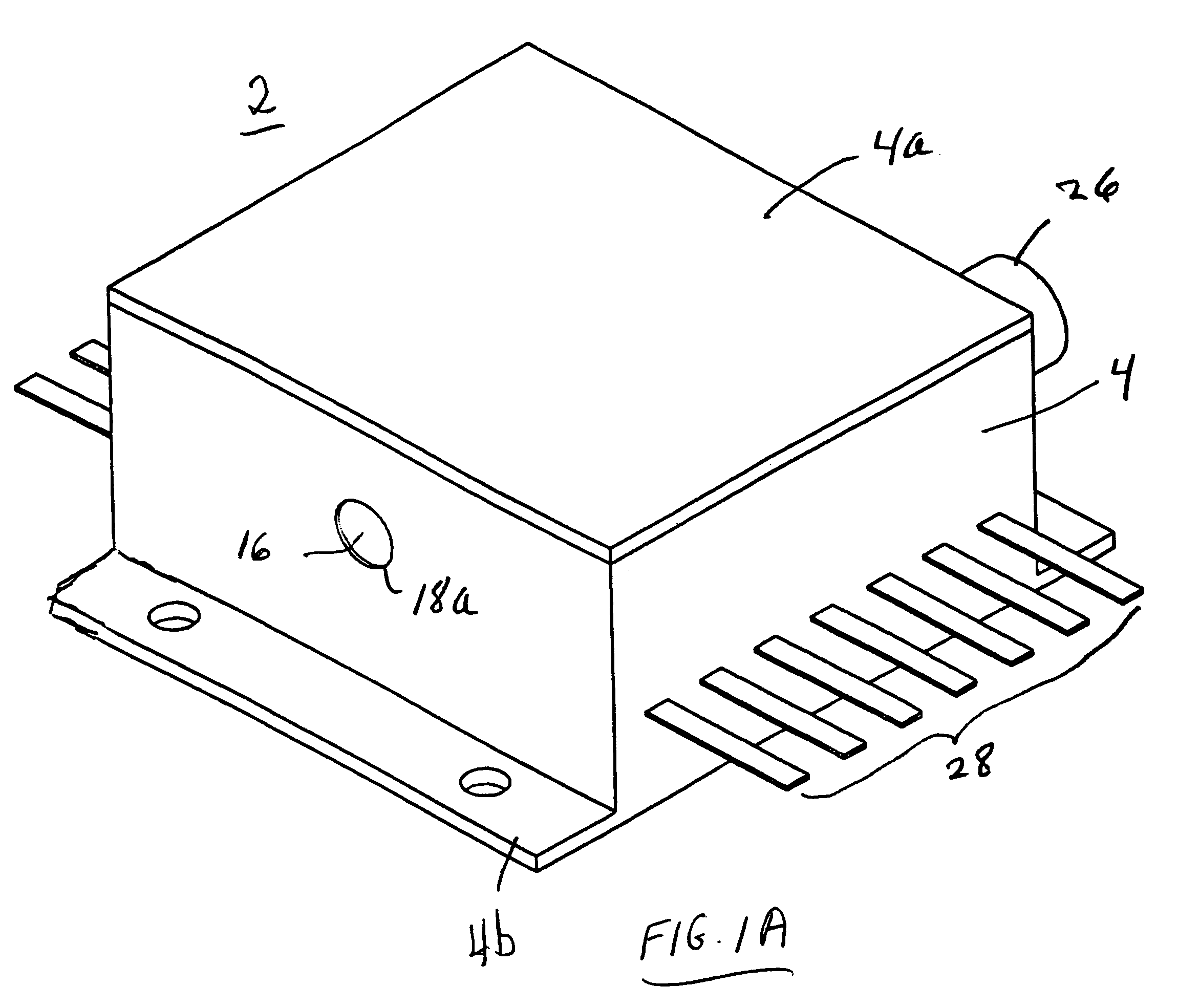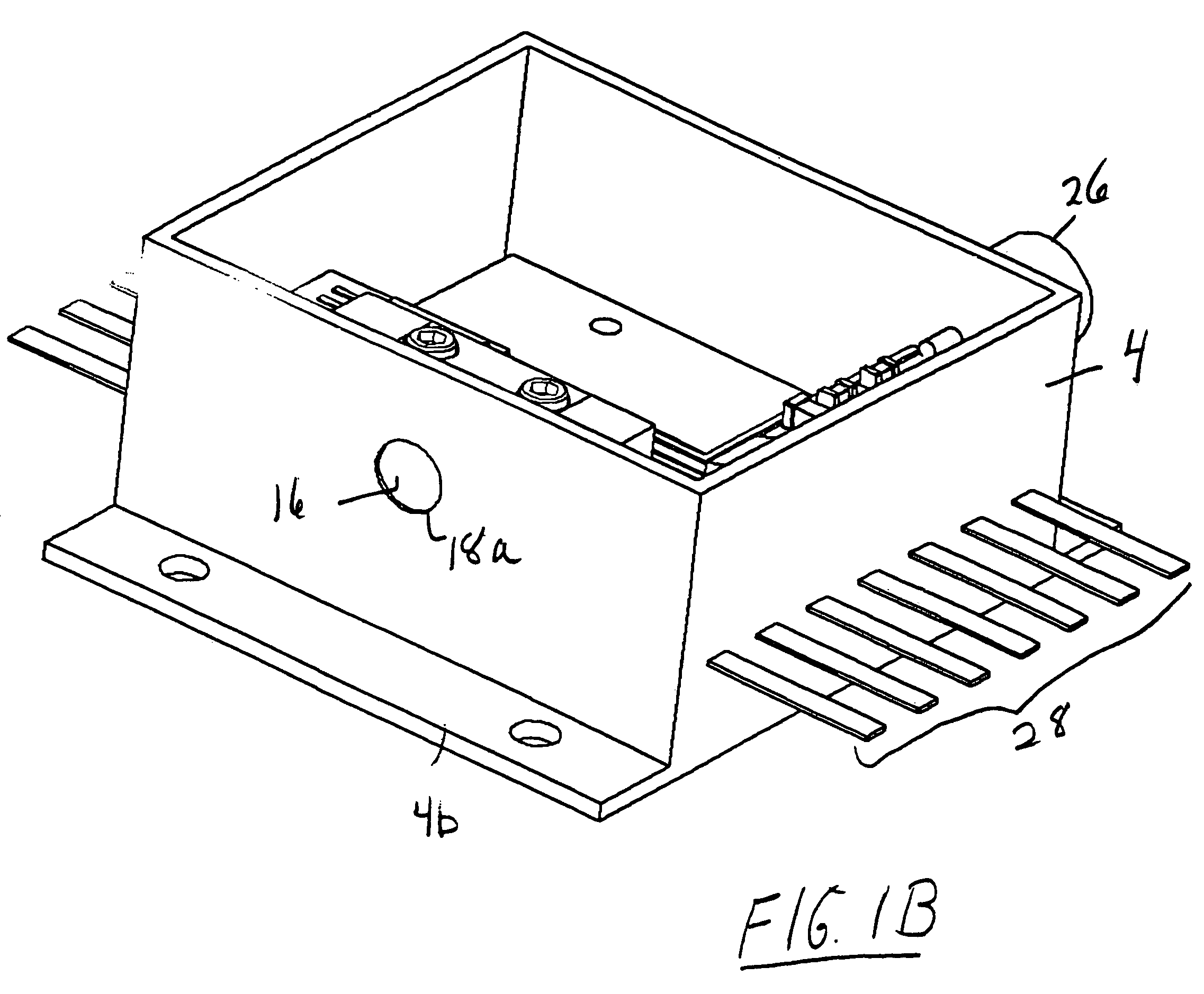External cavity tunable compact Mid-IR laser
a compact, infrared technology, applied in the direction of lasers, lasers, semiconductor lasers, etc., can solve the problems of affecting the development of mir laser devices, affecting the actual application of mir lasers, and limiting the auger recombination, so as to achieve effective cooling, avoid moisture, and facilitate use
- Summary
- Abstract
- Description
- Claims
- Application Information
AI Technical Summary
Benefits of technology
Problems solved by technology
Method used
Image
Examples
Embodiment Construction
[0072]Embodiments of the invention expand upon the basic description of the MIR laser set forth above and forming part of the above referenced co-pending application which is incorporated herein in its entirety by reference. Common elements are identified by the same reference numeral throughout. The laser gain medium 6 utilized in FIGS. 1-5 is now replaced with a quantum cascade laser gain medium 6a which has an anti-reflective coating on the side of the laser chip facing the external cavity so that the wavelength dependent filter of the external cavity now serves as the fully or partially reflecting mirror for the laser.
[0073]Embodiments of the invention may be seen in FIGS. 6-9. FIG. 6 shows a perspective view of the MIR laser 2, and FIGS. 7A and 7B show exploded perspective views similar to that of FIGS. 2A and 2B. FIG. 8 shows a plan view of an assembled external cavity tunable MIR laser with the top cover plate 4a removed to reveal the interior. FIG. 9A shows a cross section o...
PUM
 Login to View More
Login to View More Abstract
Description
Claims
Application Information
 Login to View More
Login to View More - R&D
- Intellectual Property
- Life Sciences
- Materials
- Tech Scout
- Unparalleled Data Quality
- Higher Quality Content
- 60% Fewer Hallucinations
Browse by: Latest US Patents, China's latest patents, Technical Efficacy Thesaurus, Application Domain, Technology Topic, Popular Technical Reports.
© 2025 PatSnap. All rights reserved.Legal|Privacy policy|Modern Slavery Act Transparency Statement|Sitemap|About US| Contact US: help@patsnap.com



